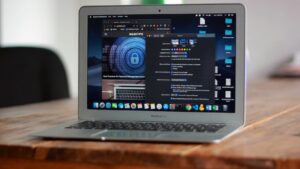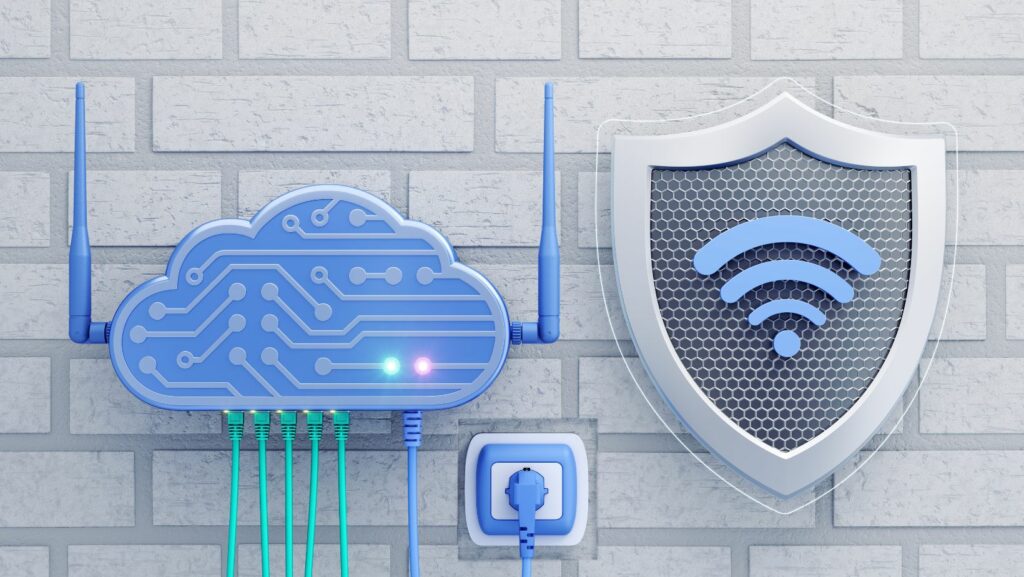Key Takeaways
- Structured Guidance: The USF Cybersecurity Flowchart provides a clear visual pathway for organizations to follow in assessing and responding to cybersecurity threats.
- Risk Assessment: It emphasizes the importance of evaluating current security postures, identifying vulnerabilities, and prioritizing risk management.
- Threat Recognition: The flowchart aids in the identification of various cyber threats, including malware and phishing, improving overall threat awareness.
- Response Strategy: It helps organizations formulate effective response plans that cover detection, containment, eradication, recovery, and lessons learned.
- Continuous Improvement: Emphasizes the need for regular monitoring, updates, and training to adapt to evolving cybersecurity challenges.
- Collaboration and Awareness: Promotes a culture of cybersecurity awareness and shared responsibility among all personnel, enhancing organizational resilience against attacks.
Navigating the complex world of cybersecurity can feel overwhelming, especially for organizations aiming to protect sensitive information. The USF Cybersecurity Flowchart simplifies this process by providing a clear visual guide to understanding and implementing essential security measures. With cyber threats evolving daily, having a structured approach is crucial for maintaining robust defenses.
This flowchart serves as a valuable tool for both IT professionals and decision-makers, outlining the steps necessary to assess risks and respond effectively. By following its pathways, organizations can identify vulnerabilities and streamline their cybersecurity strategies, ensuring they stay one step ahead of potential attacks. Whether you’re new to cybersecurity or looking to enhance your existing protocols, the USF Cybersecurity Flowchart offers a practical resource to fortify your defenses.
USF Cybersecurity Flowchart
The USF Cybersecurity Flowchart serves as a structured visual representation of essential cybersecurity processes. It assists organizations in identifying and understanding potential threats and vulnerabilities. This flowchart is especially useful for IT professionals and organizational leaders, offering a clear pathway for assessing security risks and determining appropriate responses.
The flowchart outlines critical steps in the cybersecurity protocol, including:
- Risk Assessment: Organizations evaluate their current security posture and identify weak points in systems and networks.
- Threat Identification: The flowchart guides users in recognizing various types of cyber threats, such as malware, phishing attacks, and insider threats.
- Response Planning: It helps in formulating a response strategy, including incident detection, containment, and recovery measures.
- Implementation of Controls: Users can follow recommendations for technical and administrative controls to strengthen their cybersecurity defenses.
- Monitoring and Review: The flowchart emphasizes the importance of continuous monitoring and regular reviews to adapt to evolving threats.
By employing the USF Cybersecurity Flowchart, organizations enhance their ability to proactively manage cybersecurity risks. This tool not only promotes a robust security framework but also fosters a culture of cybersecurity awareness across teams. It encourages collaboration among personnel, making cybersecurity a shared responsibility within organizations.
Purpose and Importance
The USF Cybersecurity Flowchart plays a critical role in enhancing cybersecurity measures within organizations. It streamlines complex processes and fosters efficient decision-making in the realm of cybersecurity.
Understanding Cybersecurity Protocols
 Understanding cybersecurity protocols is essential for safeguarding sensitive information. The flowchart clarifies each step in the cybersecurity process, including risk assessment, threat identification, and response planning. By visualizing these components, organizations can comprehend how to effectively manage potential threats, ensuring adherence to established security practices. This clarity improves communication among IT teams and decision-makers, enabling coordinated responses to cyber incidents.
Understanding cybersecurity protocols is essential for safeguarding sensitive information. The flowchart clarifies each step in the cybersecurity process, including risk assessment, threat identification, and response planning. By visualizing these components, organizations can comprehend how to effectively manage potential threats, ensuring adherence to established security practices. This clarity improves communication among IT teams and decision-makers, enabling coordinated responses to cyber incidents.
Benefits of the Flowchart
The benefits of the USF Cybersecurity Flowchart are substantial.
- Enhanced Risk Management: Organizations can identify vulnerabilities and prioritize them effectively, leading to a more focused security approach.
- Improved Response Planning: The structured visual guide enables quick decision-making during incidents, reducing response time.
- Increased Awareness: Personnel gain a clearer understanding of their roles in cybersecurity, fostering a culture of vigilance and accountability.
- Streamlined Training: The flowchart serves as an educational tool for new employees, simplifying complex protocols and promoting compliance from the start.
- Proactive Strategies: Organizations can foresee potential threats and implement preventive measures, minimizing the impact of cyberattacks.
By leveraging these benefits, organizations can fortify their cybersecurity posture and cultivate resilience against evolving cyber threats.
Key Components of the Flowchart
The USF Cybersecurity Flowchart consists of essential elements that enhance cybersecurity effectiveness. This section explores the key components, including the risk assessment process and incident response steps.
Risk Assessment Process
The risk assessment process identifies potential vulnerabilities within an organization’s systems. It comprises several critical steps:
- Asset Identification: Determine all assets, including hardware, software, and data. Recognizing these allows prioritization based on value and sensitivity.
- Threat Analysis: Evaluate possible threats that could exploit identified vulnerabilities. Common threats include malware, phishing attacks, and insider threats.
- Vulnerability Evaluation: Assess the security weaknesses in existing systems. This step involves reviewing security controls and policies to identify gaps.
- Impact Assessment: Analyze the potential consequences of various threats. Understanding the severity of impacts helps prioritize risks for comprehensive response strategies.
- Risk Prioritization: Rank identified risks to address the most critical ones first. This ranking enables efficient allocation of resources for mitigation efforts.
- Preparation: Develop an incident response plan and train personnel. Preparation ensures that teams are ready to respond swiftly and efficiently.
- Detection: Monitor systems and networks for signs of incidents. Effective detection mechanisms often include intrusion detection systems and regular security audits.
- Containment: Limit the impact of a cybersecurity incident. Step involves isolating affected systems to prevent further damage.
- Eradication: Remove the root cause of the incident. Eradication requires thorough investigation to ensure no residual threats remain in the environment.
- Recovery: Restore affected systems to normal operation. This step includes validating system integrity and monitoring for any signs of recurrence.
- Lessons Learned: Review the incident and improve response strategies. Conducting post-incident analysis strengthens future cybersecurity measures and enhances organizational resilience.
Implementation Guidelines
Following the USF Cybersecurity Flowchart enhances an organization’s approach to managing cybersecurity. Implementing the flowchart requires awareness of best practices and recognition of common challenges.
Best Practices for Usage
 Familiarize Teams: Ensure all IT professionals and relevant decision-makers understand each component of the flowchart. Training sessions and workshops facilitate familiarity.
Familiarize Teams: Ensure all IT professionals and relevant decision-makers understand each component of the flowchart. Training sessions and workshops facilitate familiarity.- Integrate into Security Policies: Align the flowchart with existing cybersecurity policies. This integration ensures the flowchart supports overall security objectives and strategies.
- Regular Updates: Update the flowchart regularly to reflect evolving threats and changes in organizational structure. This practice maintains relevance in a dynamic cybersecurity landscape.
- Encourage Collaboration: Promote teamwork among departments by using the flowchart as a common reference point. This collaboration encourages shared responsibility for cybersecurity.
- Document Procedures: Keep records of decisions made while following the flowchart. Documentation aids in consistency and provides a basis for future training and improvement.
- Resistance to Change: Personnel may resist adopting new procedures. Leadership should communicate the flowchart’s benefits clearly and involve staff in implementation to foster ownership.
- Complexity of Cyber Threats: Cyber threats continually evolve, posing challenges in identification. Regular training on new threats and their implications enhances preparedness.
- Insufficient Resources: Limited resources can impede effective implementation. Prioritizing key security measures helps organizations focus on critical areas until additional resources become available.
- Lack of Awareness: Employees may lack cybersecurity awareness, undermining flowchart effectiveness. Ongoing education and awareness campaigns raise consciousness about potential risks.
- Integration Difficulties: Merging the flowchart with existing systems may be challenging. Conducting thorough assessments beforehand ensures compatibility and eases integration efforts.
Future Developments in Cybersecurity Flowcharts
Future developments in cybersecurity flowcharts focus on enhancing adaptability and integration with emerging technologies. Innovations in artificial intelligence (AI) and machine learning (ML) enable flowcharts to update automatically based on real-time threat intelligence, improving response times.
Expanding the scope of flowcharts to include regulatory compliance ensures that organizations navigate the complexities of legal requirements effectively. This addition aids in aligning cybersecurity strategies with industry standards and frameworks, such as GDPR and HIPAA.
Integrating automation tools into cybersecurity flowcharts streamlines incident response processes. Automated alerts and predefined actions can reduce response times during cyber incidents, minimizing potential damage.
Enhancing user experience through interactive flowcharts promotes better engagement with the content. By providing clickable elements and personalized pathways, organizations can tailor the flowcharts to specific roles, making complex processes more accessible.
Regular collaboration with cybersecurity professionals and industry experts further enriches the development of cybersecurity flowcharts. Gathering insights from real-world scenarios helps refine flowchart elements, ensuring they align with evolving threat landscapes.
Tracking metrics and analytics offers valuable insights into the effectiveness of flowchart implementations. Organizations can assess their performance, identify areas for improvement, and adjust their cybersecurity measures accordingly.
These future advancements in cybersecurity flowcharts contribute to a proactive approach in addressing cyber threats. Adopting these developments positions organizations to respond effectively to the dynamic nature of cybersecurity challenges.
Tool for Organizations
The USF Cybersecurity Flowchart stands out as a vital tool for organizations striving to enhance their cybersecurity measures. By providing a clear visual guide through complex processes it simplifies risk assessment and incident response. This resource not only aids in identifying vulnerabilities but also fosters a culture of collaboration and awareness among team members.
Adopting this flowchart can significantly improve an organization’s ability to manage cyber threats effectively. With its focus on continuous improvement and adaptability to emerging technologies the flowchart positions organizations to stay ahead in the ever-evolving landscape of cybersecurity. Embracing these practices will ultimately lead to a stronger security posture and greater resilience against potential threats.

